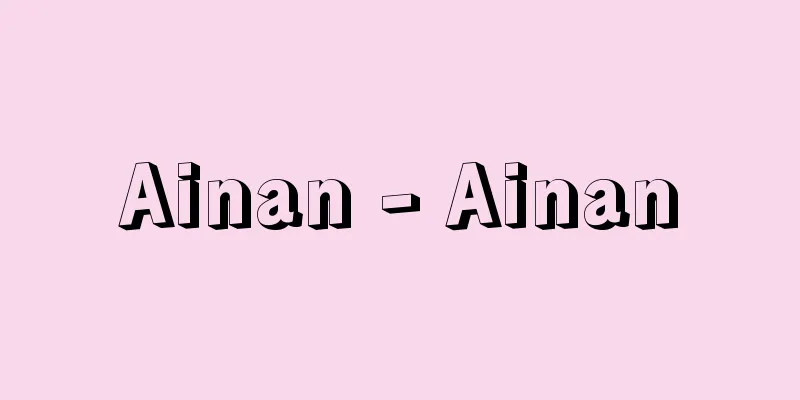Input/Output Unit

|
A general term for a device that inputs data into a computer system, outputs data from the system, or does both. Currently, data to be input from the master sheet to a computer is usually entered directly onto a magnetic disk using a keyboard. It may also be transferred to a magnetic tape for transport. However, from the days of punch card systems before computers, punched cards were the main input medium until quite recently. Also, punched tape, which was used for telegraphs before the advent of computers, was used as an input medium along with punched cards. Punched cards are high-quality paper cards measuring 8.26 cm in length and 18.7 cm in width, and up to 80 characters can be punched into each card. The cards are punched using a card puncher. The card reader passes the punched card between a light source and a photodetector, and the photodetector reads whether there are any holes and converts the information into an electrical signal. The reading speed is about 60 to 2,000 cards per minute. The card puncher punches the output from the computer into cards, and the punching speed is about 10 to 400 cards per minute. Punched tape is a paper tape 2.54 centimeters wide, and the most commonly used is the eight-unit type, with eight perforations perpendicular to the length. There are also five-unit and six-unit types, but these are mainly used for telegraphy. A tape reader passes the punched tape between a light source and a light-receiving element, and the light-receiving element reads the presence or absence of holes and converts them into an electrical signal. The tape is positioned and fed using a small hole located approximately four-tenths of the width of the punched tape. This hole is called a sprocket hole. The reading speed is about 5 to 1200 characters per second. A tape puncher is a device that punches computer output into punched tape, and has a punching speed of about 5 to 350 characters per second. Printing devices include impact printers that use mechanical impact and non-impact printers that do not. When using a computer interactively, such as in a time-sharing system or personal computer, a keyboard is usually used as the input device, and a display device using a cathode ray tube or liquid crystal display as the output device. A keyboard is a board on which keys are arranged according to a set rule, and pressing a key sends out a corresponding signal. A device used to specify a position on the display surface of a display device is called a pointing device or pointer. Typical pointing devices include touch panels or touch screens that indicate a position by pressing on the display screen, light pens that operate by placing them on the display screen, joysticks that indicate a position by the direction and angle of a rod, trackballs and mice that indicate a position by the rotational displacement of a ball, and digitizers that indicate a position on a two-dimensional plane. A plotter is a device for drawing figures with a pen. Character reading devices include magnetic ink character readers (MICRs), which magnetically read characters written in a special ink that is easily magnetized; printed character readers, which read characters printed in a specific font; and handwritten character readers, which read handwritten characters. A typical example of a handwritten character reader is a postal code sorting device. Printed character readers and handwritten character readers read optically, so they are called optical character readers (OCRs). Small, inexpensive handheld OCRs, which scan and read barcodes with a handheld reading head, are used for POS terminals. Devices that read Chinese characters are also moving toward practical use. Optical mark readers (OMRs) are devices that optically read marks on specific cards or sheets. There are two types of voice response devices: a voice editing type in which a human voice is recorded in words or phrases, and then these are connected using a response sentence to create a voice that serves as a response; and a voice synthesis type in which a voice synthesis circuit is used to synthesize and output a voice waveform. The voice editing type has been used for voice response for a long time. It has been applied in various fields, including time announcements and weather forecasts. Devices that recognize voice as input have also become quite accurate at recognizing naturally spoken voice, although the environment in which they can be used is quite limited, and some have already been put to practical use. Devices that can record output from a computer and reuse it as input data include magnetic disk storage devices, magnetic tape storage devices, floppy disks, cassette tapes, CD-R/RW, MO, streamers, USB memory, etc. These are used as external storage devices or auxiliary storage devices. [Norihisa Doi] "New Information Processing Handbook" edited by Information Processing Society of Japan (1995, Ohmsha)" ▽ "Basics of Computer Systems" by Takeshi Asakawa (2004, Tokyo Denki University Press)" ▽ "Basics of Computer Systems" 14th Edition edited by ITEC Information Technology Education and Research Department (2007, ITEC)" [Reference] | | | | | | | | | | | | | |Source: Shogakukan Encyclopedia Nipponica About Encyclopedia Nipponica Information | Legend |
|
コンピュータシステムにデータを入れたり、システムからデータを出したり、あるいはその両方を行うための装置の総称。 原票からコンピュータに入れるデータをつくるには、現在ではキーボード(鍵盤(けんばん))を用いて、直接、磁気ディスクに入れるのが普通である。移送する場合には磁気テープに移すこともある。しかし、コンピュータ以前のパンチカードシステムの時代から、つい先ごろまでは、入力媒体として穿孔(せんこう)カードが主として用いられていた。また、コンピュータが出現する以前より、電信関係に用いられていた穿孔テープも穿孔カードとともに入力媒体として用いられた。穿孔カードは縦8.26センチメートル、横18.7センチメートルの上質の紙カードで、1枚につき80字まで穿孔できる。カードにはカード穿孔機を用いて穿孔する。カード読取り装置は、光源と受光素子の間に穿孔カードを通し、穴の有無を受光素子で読み取り、電気信号に変換する。読取り速度は1分当り60枚から2000枚程度である。カード穿孔装置は、コンピュータからの出力をカードに穿孔する装置で、穿孔速度は1分当り10枚から400枚程度である。 穿孔テープは幅2.54センチメートルの紙テープで、長手方向に垂直に穿孔位置が八つある八単位のものが主として用いられる。八単位以外にも五単位のものと六単位のものがあるが、これらは主として電信用である。テープ読取り装置は、光源と受光素子との間に穿孔テープを通し、穴の有無を受光素子で読み取り、電気信号に変換する。穿孔テープの幅の約10分の4の位置に長手方向にある小さな穴でテープを位置決めして送る。この穴をスプロケットホールsprocket hole(繰出(くりだ)し孔(こう))という。読取り速度は1秒当り5字から1200字程度である。テープ穿孔装置は、コンピュータの出力を穿孔テープに穿孔するための装置で、穿孔速度は1秒当り5字から350字程度である。 印字装置には、機械的衝撃を用いるインパクトプリンターと、用いないノンインパクトプリンターがある。 タイムシェアリングシステムとかパーソナルコンピュータなど、コンピュータを会話形式で用いる場合には、普通、入力装置としてキーボードが、出力装置としてブラウン管あるいは液晶を用いたディスプレー装置が用いられる。キーボードはキーを一定の規則に従って配列した盤で、そのキーを押すことにより対応した信号が送り出される。ディスプレー装置の表示面上の位置を指定するのに用いる装置をポインティング装置とかポインターという。代表的なポインティング装置としては、表示画面上を押さえることで位置を指示するタッチパネルまたはタッチスクリーン、表示画面上に置くことによって動作するライトペン、1本の棒の倒れた方向と角度で指示するジョイスティック、ボールの回転変位で指示するトラックボールやマウス、二次元の平面上の位置で指示するデジタイザーなどがある。 プロッターは、ペンにより図形を描くための装置である。 文字読取り装置としては、磁化されやすい性質の特殊インクで書かれた文字を磁気的に読み取る磁気インク文字読取り装置(MICR)、特定の字体で印刷された文字を読み取る印刷文字読取り装置、手書きの文字を読み取る手書き文字読取り装置がある。郵便番号読取り区分装置は、手書き文字読取り装置の代表例である。印刷文字読取り装置と手書き文字読取り装置は光学的に読み取るので、光学式文字読取り装置(OCR)という。読取りヘッドを手に持ってバーコードを走査し読み取る小型で廉価なハンドOCRがPOS(ポス)端末用として用いられている。漢字を読み取る装置も実用化へ向けて進んでいる。光学式マーク読取り装置(OMR)は、特定のカードまたはシートにつけられた印を光学的に読み取る装置である。 音声応答装置は、肉声を単語あるいは文節単位に録音しておき、応答文によってこれらをつなぎ合わせて、応答文としての音声をつくりだす音声編集方式と、音声合成回路を用いて音声波形を合成して出力する音声合成方式がある。早くから音声応答に用いられているのが音声編集方式である。時報、天気予報などをはじめとして各方面に応用されている。入力としての音声を認識するための装置も、使用環境はかなり制約されるが自然に話した音声を認識する精度もかなりなものとなり、部分的にすでに実用化されている。 コンピュータからの出力を記録しておき、それをふたたび入力データとして用いることができる装置として、磁気ディスク記憶装置、磁気テープ記憶装置、フロッピーディスク、カセットテープ、CD-R/RW、MO、ストリーマー、USBメモリーなどがある。これらは、外部記憶装置または補助記憶装置として用いられる。 [土居範久] 『情報処理学会編『新版情報処理ハンドブック』(1995・オーム社)』▽『浅川毅著『基礎 コンピュータシステム』(2004・東京電機大学出版局)』▽『アイテック情報技術教育研究部編著『コンピュータシステムの基礎』第14版(2007・アイテック)』 [参照項目] | | | | | | | | | | | | | |出典 小学館 日本大百科全書(ニッポニカ)日本大百科全書(ニッポニカ)について 情報 | 凡例 |
<<: Entering into nirvana - Nyujo
>>: Hypogalactia - Hypogalactia
Recommend
Sita (English spelling)
In Sanskrit, it means "ridges." The word...
Kodaiji Temple
This temple is of the Kenninji school of the Rinz...
Atomic weapon
Atomic weapons are weapons that use the energy pr...
Alpine competition - Alpine competition
Skiing developed against the backdrop of the Europ...
Minamikawachi [town] - Minamikawachi
A former town in Kawachi County in southern Tochig...
wacke
...When used qualitatively as a name in the field...
Liquid oxygen explosives - explosives
Also known as liquid oxygen explosive. An explosiv...
Woolly thread - Woolly thread
...General term for artificially made fibers as o...
Legal Tender Act
...Since the principle of freedom of contract was...
Ishikawa Mikiaki
1859-1943 A journalist from the Meiji to early Sh...
Helen
…An unparalleled beauty in Greek legend. In Engli...
Rock erosion terrace - rock erosion terrace
...Terraces are also classified into erosional te...
Leucandron
...An evergreen tall tree of the Proteaceae famil...
Pintail duck - Pintail
A bird of the family Anatidae in the order Anseri...
Sankayou - Sankayou
A perennial herb of the Berberidaceae family (APG...









